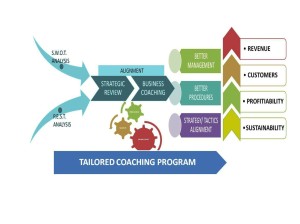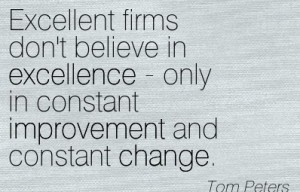Change Management and  Organizational Development
Organizational Development
When it comes to implementing strategic and tactical projects, the difference between succeeding and failing often comes down to one thing – effective change management.
At Socius Business Advisors we realize people are your greatest asset, but change can be a challenge for everyone and an organizational change starts at the top. Socius Busin ess Advisors help clients assess and align the dynamics at work in their organizations to enhance success. Based on a clear mission, vision, and sound information, we support clients to assess performance, design strategies and implement action plans that enhance operating efficiency, develop leadership, improve teamwork, operationalize plans, measure success, and coordinate operations. Along the way, we help manage change, plan for succession, align structures and workflows, make decisions, develop leaders and solve problems in many areas.
ess Advisors help clients assess and align the dynamics at work in their organizations to enhance success. Based on a clear mission, vision, and sound information, we support clients to assess performance, design strategies and implement action plans that enhance operating efficiency, develop leadership, improve teamwork, operationalize plans, measure success, and coordinate operations. Along the way, we help manage change, plan for succession, align structures and workflows, make decisions, develop leaders and solve problems in many areas.
Executive Team Alignment
Organizational excellence starts at the top, with an executive team that consistently performs at a high level of effectiveness. Culture, process, and social behavior are critical components. The team must be able to create a winning strategy and lead the organization to successful execution of that strategy. To do this, the team must be aligned.
Alignment involves pushing past beliefs to get to the facts / realities. It  is about sharing a vision, providing knowledge and methods and balancing conflicting interests to move the people in the organization from scattered to focused, from being avoiders to being problems solvers, from being fractured to being aligned as a team. The result is that the people and the organization move from mediocrity to excellence.
is about sharing a vision, providing knowledge and methods and balancing conflicting interests to move the people in the organization from scattered to focused, from being avoiders to being problems solvers, from being fractured to being aligned as a team. The result is that the people and the organization move from mediocrity to excellence.
Such alignment doesn’t happen by accident; it takes commitment and hard work. Many Executive Teams would like to achieve alignment, but are unable to identify the steps necessary to make that happen. As a result, they find themselves operating as a loose group of colleagues rather than a true team…and the organization suffers as a result.
At Socius Business Advisors we will tailor your program from our end-to-end consultative services to help leaders cut through the clutter and achieve success
TWELVE STEPS OF CHANGE MANAGEMENT
Change management is about building the foundation, building the structure, and culture to bring about the change. It’s synchronizing people (Human Resources), processes, and technology for success.
Let Socius Business Advisors help you through the minefields and get you to the other side.
Here are 12 key steps in building a plan and identify budgets/finance and other resources to ensure smooth transition.
- Seek to understand before being understood. Understand the people involved, processes or methods to be looked into for meeting changes, use of technology and automation to improve cost efficiency & improve productivity to deliver the best to the client/customer.
- Understand the current culture and performance
- Define critical performance priorities like growth, profitability, customer satisfaction and so on
- Identify 3-5 behavior strengths critical for success
- Identify weak areas and link this to performance priorities to highlight opportunities
- Work Dynamics & Take a Human Approach
- Engage process owners and build trust and faith as they work with teams to drive change
- Changes that bring about reduction in headcount are difficult to navigate. Get your team involved.
- Address all queries and grievances. It is essential to address concerns and fears so that confidence is reposed in the system and support enlisted for wider acceptance and success. A Human approach to finding alternate placement for displaced resources is critical.
- Forgive yourself (do not wallow in self-guilt) and others after giving your best. If you won’t do the task somebody else will. Remember, a doctor will cut off a leg to save the patient. Think of the people who will remain, and the business, your loyalty is to them.
- Identify Influencers at work where change is being addressed. This will ensure reduction in noise when changing processes, technology, manpower or other resources are brought about. The influencers can act as a beacon for all the teams to radiate confidence of a new tomorrow. You might have the skills to map and design excellent processes, but if you don’t have the ability to influence and drive change, then you can only go so far. Be the influence among the influencers and half your work is done.
- Support of Management. Get the top management involved. This build’s confidence down the line and creates a platform for future changes. Process owners must be able to communicate and drive their business case to senior management, sell their changes to key stakeholders, and communicate the gist and the importance at the operational level as well. Stakeholders should be clear and accept why changes to process are necessary, why and how it will impact the business. Process owners can’t operate in isolation. They need to understand how the business works, so that when they are designing processes they understand how any changes will impact different parts of the business.
- Support of Customer/Client. Let the changes within your organization or your program/process not come as a surprise/shock to your clients/customers. Based on need you could be specific or elaborate across different medium as per business impact. Choose the proper timing too. Do a risk analysis and keep all managers informed to understand full business impact to the Vendor/Business and all Partners if necessary.
- Consistent Communication & Keep it Simple. Communication is the key. Simple language that can be understood at the lowest level within the organization. Too short or brief a communication could create suspicion. Too elaborate and detailed communication could create distrust. Communication has to be proper, timely and specific to meet the need of the situation/transactions at hand. Consistent communication over a period of time, across mediums, by different spokesperson at regular intervals should be carried out as part of change management process. Ensure transparency in actions and communication. Build trust and manage communication based on needs of the receiver. Ensure that there is no overdose of unnecessary communication that can create confusion and chaos!
- Process knowledge is critical to understand, explain, and bring about changes. A process owner’s authority and ability to communicate is linked to how well they understand the process. People throughout the organization respect you more when you understand the process and discuss with the team from time to time on the challenges they face.
- A firm and bold approach in implementation. Have clarity and confidence in what is being done. As a leader if the change manager is not confident, confidence will not percolate.
- Implementation schedule/Milestone. Meet the milestones. Any change keep all informed with reasons from the same. Discuss this with your manager before it gets changed.
- Proper Planning and identifying gaps. Anticipate blockades and prepare to meet them with a plan B in case the original plan does not work.
- Pilot run the changes before full-fledged implementation. The People, Process and Technology resources needs to be tested for deviations before releasing it to all locations / floors / businesses.
- Keep a constant watch post changes. Give a 1-3 month check, recheck to ensure a parallel run and move to steady phase.
Learn how we can help you.
Call 866-488-7009
Socius Business Advisors is a leadership coaching and consulting firm headquartered in the greater Chicago area, with advisors in Atlanta, Philadelphia, Denver, and Hong Kong and serving clients around the globe.
Strategy, Planning, & Execution
Executive Coaching & Executive Peer Groups
Executive Team Alignment
Business Assessments
Turnaround & Crisis Management
Interim Management
Workouts
M&A &Post Merger Integration
Manufacturing Solutions
Domestic & Asian Procurement
Family Business Center
Workshops & Seminars
Succession Planning & Exit Planning
